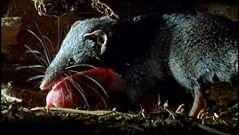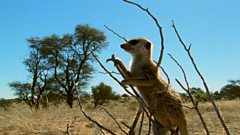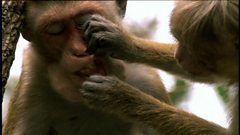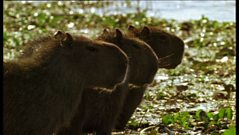
Light lunch
At just 32.7°C, the giant anteater has the lowest body temperature of any terrestrial mammal.
The giant anteater of South America has poor eyesight and relies heavily on its sense of smell which is very acute. As ants and other insects are not very nutritious the anteater must do everything it can to conserve energy. It does this by sleeping 15 hours a day and keeping its heat loss to a minimum by covering itself with its big bushy tail. In this way it manages to keep its body temperature as low as that of any other mammal at 32 degrees Celsius. But this means that its brain does not work very fast so it does not have lightning reactions or dazzling intelligence, but then anteaters do not really need those attributes. Anteaters and pangolins have different ancestors but the demands of their diet have shaped them in similar ways. Both have big claws and an immensely long tongue that slips through the tube formed by their toothless jaws. These are perfect for getting into termite mounds. The giant anteater's huge claws can easily rip apart termite mounds, and can be very dangerous to humans. To defend themselves they will use their big bowed legs and claws to grip you and it has even been said that the carcass of a jaguar was once found in the embrace of a giant anteater. As soon as a giant anteater breaks into a termite mound the inhabitants will quickly react to drive it away. This means that the termites are soon replace the ones they lost so that, in effect, the anteater is simply harvesting the termite hills in its territory in a way that ensures a continuous supply of food.
Duration:
This clip is from
Featured in...
![]()
Animal record breakers
Cheetahs, falcons, elephants and whales - meet the animal record breakers.
![]()
±«Óãtv Nature
Be captivated, informed and inspired by the world's wildlife.
More clips from Insect Hunters
-
![]()
Shrewd living
Duration: 03:47
More clips from The Life of Mammals
-
![]()
Sentry Duty—Life in the Trees
Duration: 01:52
-
![]()
Pecking order—Social Climbers
Duration: 02:16
-
![]()
Sneaky mating—Social Climbers
Duration: 03:31
-
![]()
Giant rodents—Chisellers
Duration: 03:55







